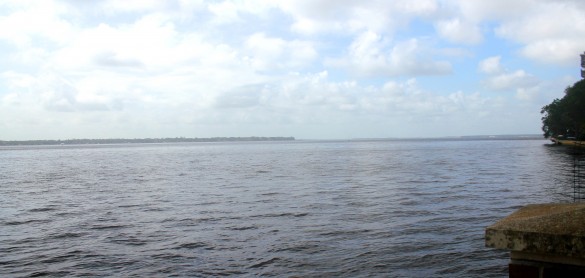 The longest river in the state of Florida, the Saint Johns River stretches over 275 miles, and creates the outer border of the Museum’s historic Gardens. The great Saint Johns is one of only thirty-three rivers (out of thousands) in the world that flows in a northern direction. It was this unique aspect of the River that inspired the Spanish, when they first discovered the River in the early sixteenth century, to give the River its first name, Rio de Correntes, which means, River of Currents. Ironically, the Saint Johns is actually one of the slowest moving rivers in the country. By the seventeenth century the River was renamed to Rio de San Juan due to a Catholic mission located at its mouth, San Juan del Puerto.
The longest river in the state of Florida, the Saint Johns River stretches over 275 miles, and creates the outer border of the Museum’s historic Gardens. The great Saint Johns is one of only thirty-three rivers (out of thousands) in the world that flows in a northern direction. It was this unique aspect of the River that inspired the Spanish, when they first discovered the River in the early sixteenth century, to give the River its first name, Rio de Correntes, which means, River of Currents. Ironically, the Saint Johns is actually one of the slowest moving rivers in the country. By the seventeenth century the River was renamed to Rio de San Juan due to a Catholic mission located at its mouth, San Juan del Puerto.
After a few skirmishes with the French in the seventeenth century, especially when the French created Fort Caroline at the northern tip of the River, the Spanish maintained control of the region, albeit not for long. The Spanish would then loose Florida to the English due to the French and Indian War, at which point the River, along with Florida became a territory under the United States. From then on the River was translated to its modern English name the Saint Johns River.


